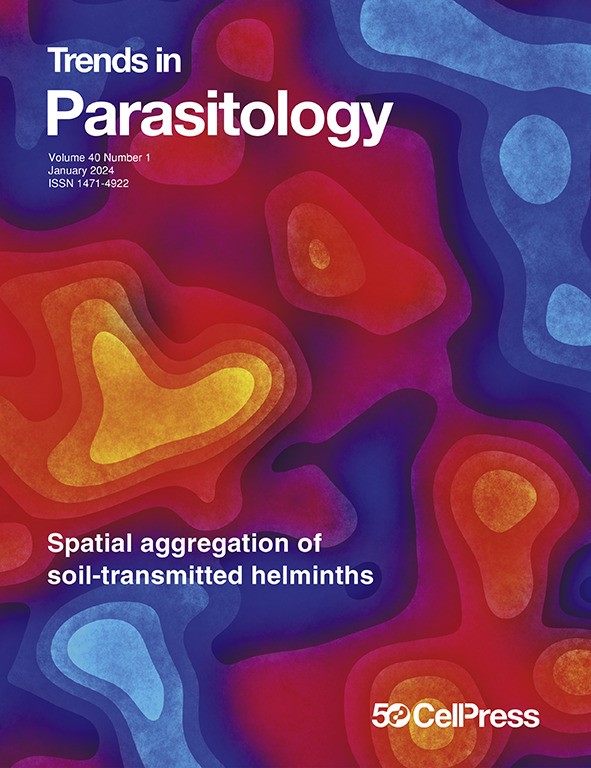猫媒介传播疾病:从地方风险到全球关注。
IF 6.6
1区 医学
Q1 PARASITOLOGY
引用次数: 0
摘要
虽然媒介传播的病原体感染世界各地的猫,但历史上对这一主题的研究工作一直受到阻碍,因为人们认为猫比狗更不容易受到这些感染。此外,关于猫媒介传播疾病(FVBDs)的流行病学、临床表现和人畜共患重要性的数据有限。这篇综述讨论和更新了目前FVBDs的地理分布,以及它们的临床特征、诊断、治疗和预防措施,强调了猫和狗之间这些疾病的主要区别,并确定了解决现有知识空白所需的研究。本文章由计算机程序翻译,如有差异,请以英文原文为准。
Feline vector-borne diseases: from local risks to global concerns.
Although vector-borne pathogens infect cats worldwide, historical research efforts on this topic have been hampered by the belief that cats are less susceptible than dogs to these infections. Additionally, limited data are available on the epidemiology, clinical presentation and zoonotic importance of feline vector-borne diseases (FVBDs). This review discusses and updates the current geographical distribution of FVBDs, along with their clinical features, diagnosis, treatments, and prevention measures, highlighting the key differences between these diseases in cats and dogs and identifying the research needed to address existing knowledge gaps.
求助全文
通过发布文献求助,成功后即可免费获取论文全文。
去求助
来源期刊

Trends in parasitology
医学-寄生虫学
CiteScore
14.00
自引率
3.10%
发文量
148
审稿时长
6-12 weeks
期刊介绍:
Since its inception as Parasitology Today in 1985, Trends in Parasitology has evolved into a highly esteemed review journal of global significance, reflecting the importance of medical and veterinary parasites worldwide. The journal serves as a hub for communication among researchers across all disciplines of parasitology, encompassing endoparasites, ectoparasites, transmission vectors, and susceptible hosts.
Each monthly issue of Trends in Parasitology offers authoritative, cutting-edge, and yet accessible review articles, providing a balanced and comprehensive overview, along with opinion pieces offering personal and novel perspectives. Additionally, the journal publishes a variety of short articles designed to inform and stimulate thoughts in a lively and widely-accessible manner. These include Science & Society (discussing the interface between parasitology and the general public), Spotlight (highlighting recently published research articles), Forum (presenting single-point hypotheses), Parasite/Vector of the Month (featuring a modular display of the selected species), Letter (providing responses to recent articles in Trends in Parasitology), and Trendstalk (conducting interviews). Please note that the journal exclusively publishes literature reviews based on published data, with systematic reviews, meta-analysis, and unpublished primary research falling outside our scope.
 求助内容:
求助内容: 应助结果提醒方式:
应助结果提醒方式:


